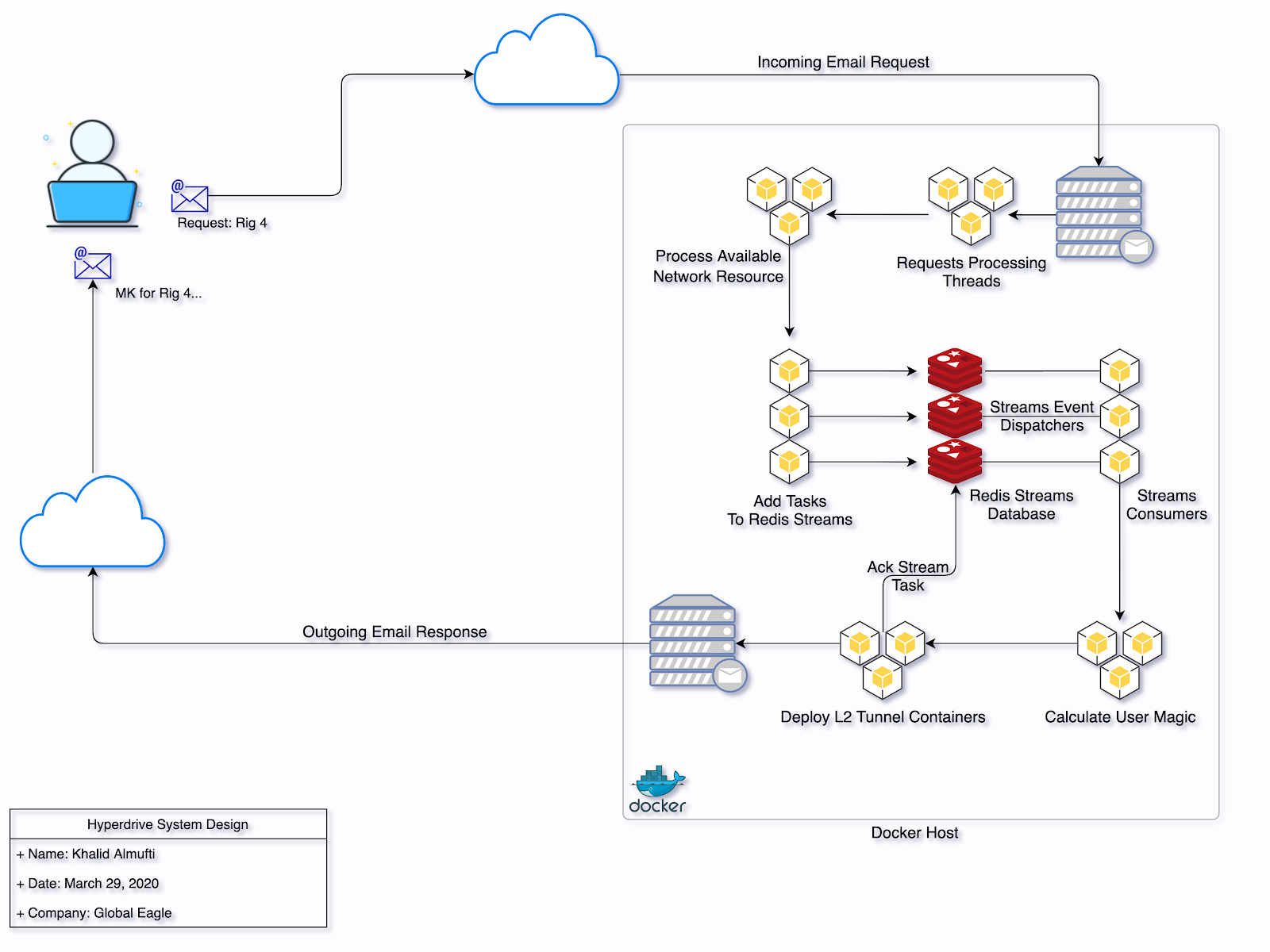Edit: This guide is outdated.
Hi all,
It’s finally here after almost 3 weeks of staying past 1am working on this… Please do keep in mind this a beta
release so expect lots of issues. Also please share with whom it may concern.
Up to date documents and install scripts on: http://hyperdrive.anuvu.com/
[ Windows Users ]
I did partial testing using WSL2. It works well, though the instruction is much more complicated. Microsoft will soon release a Windows 10 update the will make WLS2 install easier. Your best option for now is to run Ubuntu vm on your Windows system.
[ Linux and macOS Users ]
Copy past this into your terminal, will install hyperdrive client cli tool "magic":
[ Instruction for macOS users ]
First Time Setup:
- Download and install Docker Desktop from https://www.docker.com/products/docker-desktop
- If you already have Docker installed, make sure you are running the latest version, click “Check for Updates” from the Docker app next to your wifi/clock icons.
- Install macOS package manager Homebrew from: https://brew.sh/you will just need to run the following command in your Mac terminal:
- Using Homebrew to install Pulseaudio server, like so:
- Starting Pulseaudio server: (Note you’ll have to do this every time you reboot your Mac, will try to make this part easier in later updates)
[ macOS instruction done ]
[ Instruction for Linux users ]
- Download and install Docker for your linux distribution, I've tested the system on Ubuntu 20.04 LTS, using Docker snap.
- Use the magic command as explained below, it will inform you of any missing lib/tools that your distribution need.
[ Linux instruction done ]
[ Using Hyperdrive VNC service ]
Send an email to: core@hyperdrive.anuvu.com
Subject format: Rig \<number>
You can leave the email body empty.
Example:

Wait for a response with your magic key.
Use your key to establish a remote session to the requested rig, like so:
open a new terminal window and type (options order don't matter):
Note linux users will need to enter their sudo password, that's a Docker default for none root users.
Example:

First time using the magic command you will have to wait for Docker to download the image from the internet.
This should start the process, once you see the message "Initialization Sequence Completed” your session is ready.
You can use any VNC client to login using localhost:5901 as VNC ip or better, using noVNC from a chrome browser go to: http://localhost:6901/vnc.html
Password for both noVNC and VNC is:
- Once connected using noVNC, click the gear icon and set Scaling Mode to Remote Resizing (you have to do that once, chrome will remember).
- When done you can shutdown the session by pressing Ctrl+C to stop the magic command.
- You can still go back to your session using the magic command, the key is valid for 8 hours.
Note: This can work on any rig as long as its network is configured in a specific way, I have a setup in the lab but for this to fully work for all rigs I will need Randy from QA to help with the wiring, also part of the changes will require the drop of skipping ip address for the rigs, like 60, 70, 80 etc, all rigs will have to follow the sequence starting at 192.168.80.1
[ Upgrade process for both hypervnc and hyperwifi images ]
FAQ:
I like this service, can I request feature X?
Sure, as long as I get an ok from my manager to spend time on it.
Why called Hyperdrive?
Because Warpdrives are old tech and super slow...
Can I up the VNC desktop resolution?
Sure, along with the -key parameter add -res=1920x1080 as an example, or it defaults "1280x1024".
Why does my chrome history get wiped every time I start a new session?
These containers are stateless once you stop it, you lose all saved data, it’s fresh every time. (perfect for QA I’d think?!)
Chrome keeps crashing when I open X number of tabs?
You’re probably using more than 1GB of browsing shared memory, you can add more using -mem=2 as an example.
I find this interesting. How does it work?
Thanks! I’ve been thinking about doing this for over a year and I did have lots of fun working on it, the whole project felt like a MVP startup :) Here is the system design:



